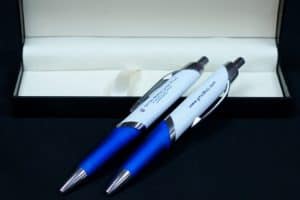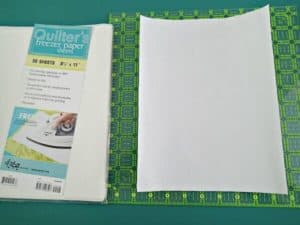You have arrived in the fascinating world of garment decoration and T-shirt production. You are likely to have heard of the various printing methods in the garment decoration industry, particularly sublimation printing and heat transfer printing. You may be wondering which form of garment decoration is the best one to use.
The truth is that both methods are excellent; however, each has its own set of advantages and disadvantages. The perfect way for you or your company, on the other hand, is determined by your requirements and the products you intend to produce.
In this post, we will take an authentic look at the advantages and disadvantages of each garment decoration method to assist you in determining which one will be the most suitable for your requirements.
Let’s get this party started!
🛍 Heat Transfer Printing
Heat Transfer Printing is a form of printing that uses heat to transfer images to a surface.
Heat transfer printing (also referred to as heat printing, thermal printing, and thermal transfer printing) applies customized design to garments or other items by using heat and pressure to the garments or other items.
When you apply heat and pressure to heat-applied materials, this printing method transfers custom designs or images to the garments or other printed items.
It is possible to decorate or print on various items using the heat transfer printing method, including T-shirts, bags, caps, awards, plaques, and any other things that can withstand the high temperatures of the transfer.
It is feasible to print with various types of heat transfer printing; however, only two are currently widely used in the garment decoration industry. Vinyl (material-based transfer) and digital heat transfer publication are examples of this type (ink-based transfer).
Vinyl Heat Transfer Printing
Vinyl Heat Transfer Printing is a method of printing on vinyl.
This form of heat transfer printing depends on using a motion picture or bodily transfer material with a temperature-resistant adhesive backing, such as iron-on vinyl (heat transfer vinyl), to transfer custom designs onto garments, as opposed to other types of heat transfer printing.
Digital Heat Transfer Printing
Digital Heat Transfer Printing is a type of printing that uses heat to transfer images from one surface to another (Ink-Based Transfer)
In addition to using heat, digital heat transfer printing does not require the use of an adhesive-backed material.
As an alternative, it uses an inkjet or laser printer to print your designs onto a unique heat transfer paper published with apparel ink. You can heat press the form onto your garment to transfer your designs onto the fabric.
As regards this type of printing, adhesives will utilize, though they are either applied directly to transfer paper surface or are already mixed with ink and activated with heat.
Would you mind reviewing our heat transfer printing fundamentals to learn more about the various available heat transfer printing types?
The Advantages and Disadvantages of Heat Transfer Printing
Pros:
- The initial investment in heat transfer printing is meager.
- It is simple and suitable for beginners.
- You will not restrain in terms of the color of the item that you can embellish.
- By either an inkjet or a laser printer, you have two different printing options.
- The printing system will utilize to decorate both polyester and cotton substrates, depending on the application.
- With laser release paper, you can achieve self-weeding results.
- Ink-jet printers do not use ink; preferably, they use toner, which means they do not clog up.
Cons:
- The Inkjet transport records will only apply to textile materials, not other types of materials.
- Inkjet transfer papers cannot self-weed.
- Larger designs created using this method are more prone to cracking than smaller designs.
- The hand feel of larger designs is heavier (the artwork can feel by the wearer of the garment decorated with this printing method)
- In the case of laser printers, the type of transfer paper utilized for transferring designs toward materials differs from the type of transfer paper used for transferring designs onto hard surfaces.
- Dye Sublimation Printing is a type of digital printing that uses dyes to create images.
🛍 Sublimation Printing
Heat transfer printing, also known as dye-sublimation printing or sublimation printing, is a type of heat transfer printing similar to digital heat transfer printing. It also uses ink and heat to transfer the designs.
On the other hand, it employs different materials, ink, equipment, and approach (as it does not rely on adhesives to transfer designs).
The process of sublimation printing involves creating custom designs on a computer and printing them on transfer paper with an inkjet printer, in this case, using sublimation inks.
It is then necessary to apply heat to the transfer paper designed before it will use to decorate with an advertisement hot pressure.
The fusion of heat and pressure from the heat press causes ink or dye to ”sublimate,” which turns from a solid to a gas. It allows the ink or paints to permeate and adhere to the fiber of the item you decorate on a molecule-by-molecule basis.
The fact that the design adheres to the fiber of the substrate on a molecular level results in a highly durable print with no chance of peeling or cracking over time.
Because the transferred design does not create an additional layer on your garment, the decorated area does not have any different sensations to the touch from the rest of the fabric. Using this printing method, you will get an extremely long-lasting print that will last as long as the fabric itself under normal circumstances.
Dye-sublimation printing will use to decorate polyester materials. Still, they also used to print on various hard surfaces such as puzzles, mugs, jewelry, custom water bottles, and other items.
The Advantages and Disadvantages of Sublimation Printing
Pros:
- Unrivaled long-term durability
- The transfer has a self-weeding feature.
- Because the design is not layered, it does not have a hand feel.
- The cost of the investment is low.
- Produces noticeable and vibrant colors on both soft and hard substrates, depending on the application.
- This method makes use of the same transfer papers on both hard and textile surfaces.
Cons:
- Working with poly-coated substrates and polyester fabrics is the only option.
- Sublimation ink clogs up in the printer at an alarmingly rapid rate.
- The color of the substrate determines the extent to which publication technique might be applied.
The Dissimilarities Between Sublimation Printing and Heat Transfer Printing
Hopefully, by this point, you have a better understanding of what heat transfer and sublimation printing are and how they work. For the time being, let us get down to the details of the two printing methods and compare them in a few key areas.
🛍 Requirements for Equipment and Initial Startup Costs
A heat transfer printing technique is one of the most cost-effective methods of garment decoration available today.
The only apparatus you will require is a laser or inkjet printer, heat transfer paper, a heat press, and the garments or t-shirts you wish to decorate. Once you have these items, you can get started. Alternatively, you could purchase vinyl, a vinyl cutter, a heat press, and the garments you wish to decorate.
On the other hand, sublimation printing has a higher initial start-up cost than the heat transfer printing option, though this cost has decreased significantly in recent years.
Sublimation printing requires an investment in a sublimation printer, dye or ink for the printer, paper for printing on the article, software for the printer, a heat press for printing, and the products printed using this method.
Apart from that, sublimation printers have a longer life span than the printing machines used in the heat transfer printing process.
🛍 Durability and the way it feels
You were heating the fabric; otherwise, the garment before printing creates layers of design on the material you are printing on.
With your hand, you can feel the additional layer added. Additionally, the coating is not as durable as sublimation prints, as it can fade or crack over time after being subjected to many washing cycles.
In contrast, sublimation is when the ink is integrated into the fabric and becomes a part of it instead of forming an additional layer of the material.
This printing process is a garment decoration that is unparalleled in terms of both feel and durability.
🛍 The Different Types of Fabrics That Able to Used to Decorate
Compared to heat transfer printing, sublimation printing places more restrictions on the types of garments that will decorate.
In the first place, sublimation will not use to decorate 100 percent cotton material; instead, this method will utilize to print on polyester garments. The ink utilized in sublimation printing simply attaches to polyester clothing fibers, and therefore is not suitable for use on other fabrics.
While this method can decorate few poly-cotton blends, the results will be less vibrant and bright than those obtained when sublimating on 100 percent polyester fabrics, according to the manufacturer.
Furthermore, because sublimation printing does not leave an extra layer on top of the garment, the fabric you are decorating must be very light in color or white for your transfer to show through.
Heat transfer printing is the apparent winner in this category for the variety of fabrics and materials that will decorate. Because it enables you to decorate both dark and light-colored cotton or polyester fabrics, as well as cotton-poly blends, it is exceptionally versatile.
While heat transfer printing is the most popular method in this section, it cannot use on most other hard surfaces, in contrast to sublimation, which will operate on a wide variety of hard surfaces.
Specify the amount of time, pressure, and temperature required.
The dye sublimation printing method is the clear winner because it uses less heat and pressure than the heat transfer printing method, which saves money.
In addition, the decoration will accomplish in less than 60 seconds, as opposed to the heat transfer process, which takes a more extended period to complete decoration.
🛍 Weeding
Sublimation printing has the advantage of being naturally self-weeding. For this reason, because only the dye and not any other pigments will transfer to the garment, the printing, pressing, and peeling processes are simplified and expedited.
Heat transfer papers, except for “two-step” laser transfer papers, do not self-weed when printed with them, except for one of the “two-step” laser transfer papers.
Unless you want the shape of the paper to create a noticeable background on your garment, you will need to weed the transfer by trimming around the design with scissors or a cutting plotter. This trimming process can also impact the amount of time it takes to complete the procedure.
🛍 The Colors That Are Available for Printing
A permanent, realistic coloration will achieve through sublimation printing, which has high resolution and clarity. Full-color fabric decoration is possible, which is beneficial if you have customers who require a specific color (for example, a specific color for their company logo) or if you want to print photos on your fabric decoration.
While using heat transfer printing, it is feasible that it will not achieve the exact high resolution and photo-quality transfer as you would with sublimation, regardless of the type of heat transfer paper you use (inkjet versus laser).
According to industry standards, light-colored textiles produced with inkjet heat transfer paper or laser heat transfer paper published with an OKI white toner laser printer to achieve photo-quality prints with heat transfer printing.
Final Remarks
It is possible to decorate apparel using both sublimation and heat transfer printing techniques; both printing technologies are affordable and beneficial. It will use to decorate fabric straightforwardly with a few simple steps.
The most appropriate method for you ultimately depends on your requirements or the product you wish to create, so the decision is entirely up to you.
However, if you want to decorate other surface substrates such as tiles, mugs, plastic, jewelry, ceramic, and so on, I recommend investing in a dye-sublimation printer. If you intend to limit your business to garment decoration only, you should invest in a high-quality heat transfer printer for your garment printing operation.
In this post, we hope to have demonstrated the distinctions between the two printing technologies and provided you with the necessary information to assist you on your journey into the world of apparel printing and decoration.
Would you mind reading our heat printing basics or browsing through our heat printing series if you are concerned in learning more about other printing technologies or other relevant information?




